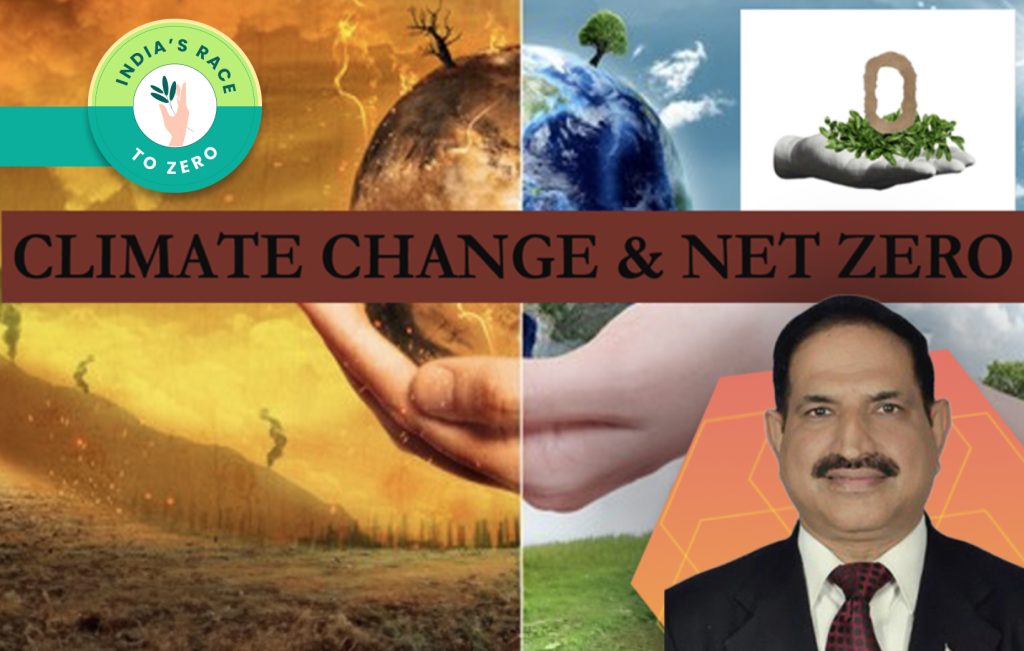Over the last decade, the climate change crisis has intensified, marked by unprecedented temperature increases leading to more frequent and severe extreme weather events. Unseasonal heat waves, flash floods, cloud bursts, intense thunderstorms, and cyclones have become alarmingly common, underscoring the urgent need for global climate action. Climate change is a pervasive global phenomenon that affects all aspects of life.
Since the advent of industrialisation, rising temperatures have become evident, with the last decade being one of the warmest periods in human history. Each year has been breaking the temperature records of the previous year, with 2023 being the warmest on record. This increase in temperature is primarily due to greenhouse gas emissions from industrial processes. If current greenhouse gas (GHG) emissions continue on their present trajectory, the planet is projected to surpass a 2.8°C temperature increase by the end of the 21st century, according to the 13th UN Emissions Gap Report (2022). This would lead to catastrophic and irreversible consequences.
Temperatures have already risen by 1.1˚C, and the impact is evident in the form of extreme weather events and escalating disasters. The frequency and intensity of cyclones, typhoons, and hurricanes are increasing, while heatwaves have become more pronounced, frequent, and severe, even occurring in previously unheard-of seasons. The evidence of climate change’s impact is clear, highlighting the critical need for immediate and sustained global action.
Causes of Climate Change:
Historically, the earth’s atmospheric system maintained a temperature of around 15°C and an atmospheric CO2 concentration of about 280 ppm for 800,000 years, thanks to a balanced carbon cycle (climate.nasa.gov). However, industrialisation disrupted this balance, with fossil fuel combustion increasing atmospheric CO2 levels to 421 ppm as of June 3, 2022 (NOAA, Mauna Loa lab). This rise in greenhouse gas emissions, particularly CO2, is the main driver of climate change. In response, the world has implemented various policies and programs to reduce GHG emissions. To further mitigate climate change impacts, we must urgently transition to sustainable energy sources, implement climate-resilient policies, and adopt responsible practices to preserve the earth’s atmospheric balance and ensure a sustainable future.
Source: Global Climate Change (NASA)
The Paris Agreement and India’s Commitment
Before the Paris Agreement, India and the broader Global South negotiated based on the principle of Common But Differentiated Responsibility (CBDR). However, with the ratification of the Paris Agreement in 2015 by 196 countries, including India, a new chapter in global climate policy began. The agreement aims to limit global warming to 2°C by 2100, with efforts to keep it below 1.5°C to prevent irreversible ecological damage. Achieving this requires the world to become carbon net neutral by 2050.
Signatories of the Paris Agreement were tasked with declaring their voluntary actions through Nationally Determined Contributions (NDCs), updated every five years to reduce greenhouse gas emissions. India submitted its first set of NDCs to the UNFCCC and updated them in August 2022 with ambitious targets. These include meeting 50% of its energy requirements through renewable energy by 2030, amounting to 500 GW, and reducing carbon intensity by 45% per capita of GDP from 2005 levels. Additional initiatives include the Mission LiFE and the creation of a CO2 equivalent sink of one billion tons through afforestation and other greening methods.
The Road to Net Zero
At COP26 in Glasgow, Prime Minister Narendra Modi announced the Panchamrit strategy, a comprehensive plan to make India carbon neutral by 2070. This strategy, combined with India’s updated NDCs, marks the beginning of India’s journey to net zero. As a responsible nation committed to fighting climate change, India has launched the National Action Plan on Climate Change (NAPCC). Under the NAPCC, India has devised various climate change mitigation strategies through several missions.
India is on a path to significantly increase its renewable energy capacity, aiming to triple it to more than 500 GW by 2030. The adoption of electric vehicles (EVs) is another crucial component, with a target of achieving 30% of all vehicle sails to be electric by 2030. Additionally, India aims to double its energy efficiency by 2030 and has established a robust policy framework for businesses to reduce their carbon footprints, aligning with the country’s net zero commitment by 2070. This proactive approach has led many major companies to pledge to become net neutral by 2045.
Mitigation and Adaptation Efforts
India’s comprehensive strategy to combat climate change involves expanding renewable energy capacity, improving energy efficiency, enhancing forest cover, and promoting sustainable transportation. These efforts are complemented by initiatives aimed at building climate resilience in agriculture, urban areas, and water management. By reducing greenhouse gas emissions and adapting to the impacts of climate change, India is making significant strides towards a sustainable future.
India’s journey to net zero is a testament to its commitment to addressing climate change responsibly. Through ambitious targets, innovative strategies, and collaborative efforts, India is not only leading the charge towards a sustainable future but also setting a benchmark for other nations to follow. As the world faces the increasing challenges of a changing climate, India’s proactive approach offers hope and a clear path forward.
Source link : View Article
“This article first appeared in IndusTales, published by Light Of Asia”
Author
-

Prof (Dr.) S. N. Mishra is a Visiting Professor at the TERI School of Advanced Studies, where he teaches Climate Change Risks Mitigation, Adaptation, Net Zero, and Greenhouse Gas Inventory to postgraduate students. As a consultant in Climate Change and Sustainability, he collaborates with corporate and industries on climate change risk analysis and carbon footprint calculation. An Indian Air Force veteran, he previously served as the Director of Climate Sciences and Weather for the Government of India & as Chief Meteorological Officer for the United Nations.



